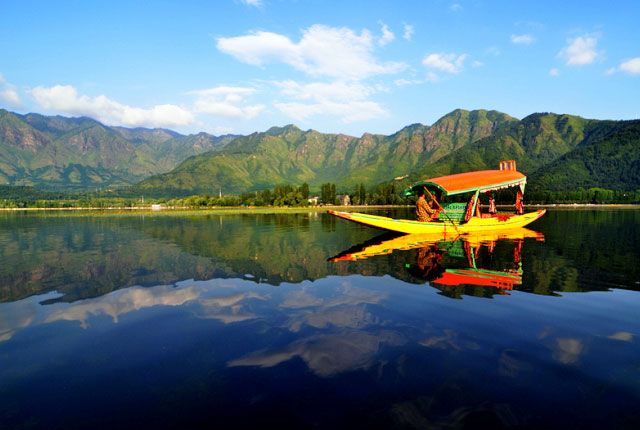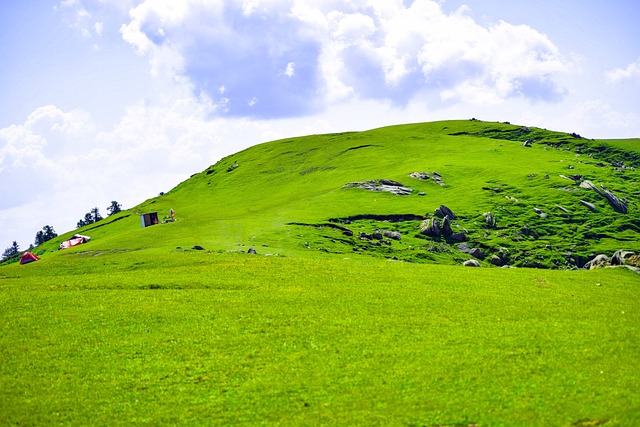
Is it safe to visit Gurez Valley now
Table of Contents
ToggleOverview
Traversing the emerald-green stretch of Gurez Valley, nestled in the Pir Panjal mountain range of Kashmir, is a journey that invites the adventurous traveler. With its snowy peaks, sapphire waters, and ancient wooden bridges, Gurez Valley tourism is increasingly popular with nature lovers. But against the picturesque backdrop, several would-be tourists want to know: Is it safe to travel to Gurez Valley? In this exhaustive travel guide, we’ll respond to that question with a resounding “Yes!” while giving you comprehensive Gurez travel tips, practical information, and the best travel advice for safe Gurez Valley travel.
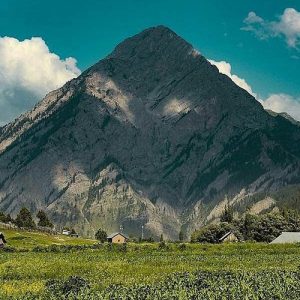
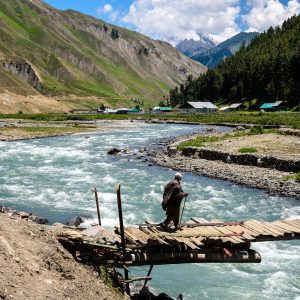
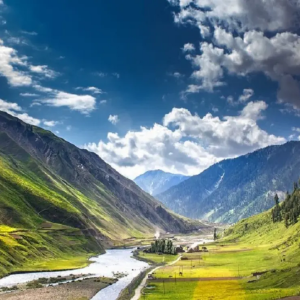
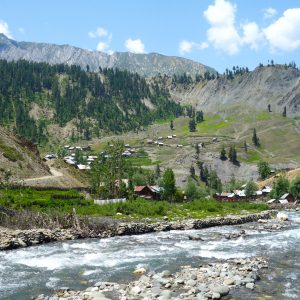
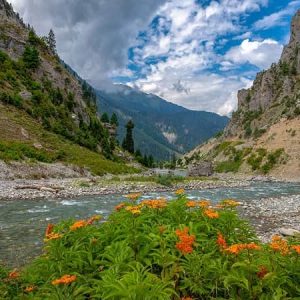
Introduction: Welcoming the Unspoilt Charm of Gurez
Situated at an elevation of about 2,400 meters, the Gurez Valley runs for approximately 86 kilometers along the Kishanganga River. Visited fewer times than Kashmir’s better-known sites, the Gurez Valley presents an unspoiled escape, where life is still carried on in an almost untouched rhythm away from the hordes of tourists. Preparing your trip to the Gurez Valley, you’ll find secluded meadows, villages of yore, and sweeping vistas that are like something from a fairy tale.
Location and Accessibility: Traveling to Gurez Safely
Before discussing safety factors, let’s plan how to reach this offbeat paradise:
- By Road: The drive from Srinagar to Gurez Valley is around 8–10 hours through the Bandipora–Razdan Pass route. Roads are twisting but good, and regular security checkpoints guarantee traveler security.
- By Air: Though there is no direct airport in Gurez, you can take a flight to Srinagar International Airport and then travel by road.
- Local Transport: Common jeeps and taxis run on a regular basis between Dawar, the central point in Gurez Valley, and Bandipora.
Local administration and security personnel patrol roads to Gurez Valley despite the hilly terrain, ensuring safe travel to Gurez Valley even for one person.
Safety Overview: Why Gurez Valley Is Safe for Visitors
- Strong Security Presence
Gurez Valley boasts a uniform security presence with local police and Indian troops deployed at strategic points. Roadblocks at each major road intersection give comfort to visitors concerned about local tension.
- Low Crime Rate
Gurez locals are friendly and hospitable. Petty crime is minimal, and tourist harassment or theft is virtually nonexistent. Visitors tend to remark on the prevalent strong hospitality they receive.
- Well-Maintained Infrastructure
Recent investments in road safety, bridges, and medical facilities have significantly improved the infrastructure. Whether you’re hiking along the riverbank or driving through the valley, you’ll find clear signboards, reliable communication networks, and clean public amenities.
By following basic precautions—keeping valuables secure, traveling during daylight hours, and registering at the local tourism office—you can ensure a trouble-free Gurez Valley trip.
Weather and Best Time to Visit: Planning Around the Climate
Gurez Valley climate changes tremendously with the seasons, affecting both comfort and accessibility:
Summer (May to September):
Daytime: 15°C to 25°C
Nights: 5°C to 10°C
Why visit now? Clear skies, flowers in bloom, and best trekking conditions in Gurez Valley.
Monsoon (July to August):
Challenges: Brief landslides on mountain roads.
Advice: If visiting this season, track real-time road conditions and bring rain equipment.
Autumn (October to November):
Highlights: Golden larches and crisp mountain air.
Note: Snowfall can start early in late November.
Winter (December to February):
Temperatures: Fall to –5°C or below.
Accessibility: Razdan Pass usually closes due to snow; access can be restricted.
Tip: Skiing and snow trekking enthusiasts can enjoy Gurez Valley skiing and snow trekking, but guided tours are necessary.
For the average visitor, the optimal time for a comfortable and secure Gurez Valley holiday lies between June and September, when the roads are clear and the valley is at its blooming best.
Where to Stay in Gurez Valley: Accommodation Options
Tourism in Gurez Valley offers accommodation options for all budgets, fusing comfort with tradition:
Heritage Guesthouses:
Restored along old wooden building lines, these guesthouses offer local food, bonfire nights, and breathtaking river vistas.
Campsites & Tented Lodges:
For a memorable Gurez trekking safety adventure, camps in Dawar and Kanzalwan provide tents with complete equipment, escorted bonfires, and hot meals.
Government-Operated Tourist Huts:
Economical and rugged, these huts have simple facilities and are mostly situated at scenic viewpoints.
Homestays:
Homestays in Dawar and Habba Khatoon Village provide an opportunity to live the Kashmiri culture firsthand, with traditional Wazwaan food.
Regardless of the option, book your lodging ahead of time—during peak season especially—to have a hassle-free and secure visit to Gurez Valley.
Local Culture and Etiquette: Blending In Respectfully
A part of safe travel to Gurez Valley is being considerate of local customs:
- Dress Code: Simple, comfortable dress is welcome. Women can opt to cover their heads in village locations.
- Photography: Always get permission prior to taking pictures of locals, particularly in religious or domestic contexts.
- Greetings: An informal “As-salamu alaykum” (peace be upon you) can go a long way in gaining trust.
- Festivals & Events: If your journey to Gurez Valley overlaps with local festivals such as the Habba Khatoon festival, join in respectfully—watch rituals, taste local music, and relish cultural performances.
Adopting the local lifestyle not only adds value to your travel but also promotes goodwill, improving overall security.
Health and Medical Facilities: Staying Well in High Altitudes
Altitude travel has health implications. Remember these Gurez travel tips:
- Acclimatization: Overnight in Bandipora prior to continuing on to Gurez to minimize the chances of altitude sickness.
- Hydration: Bring purified water or water purification tablets; dehydration is not an option.
- Local Clinics: There are rudimentary medical facilities in Dawar and Razdan. They provide treatment for everyday ailments, altitude sickness, and minor injuries.
- Pharmacies: Stock on necessary drugs in Srinagar prior to leaving; local pharmacies have little stock.
- Emergency Evacuation: In extreme situations, air or specialized medical transport can be organized to Srinagar’s hospitals. Your accommodation provider or local government may help.
With these safety measures and the availability of trained medical personnel, Gurez Valley safety reaches best to both outdoor excitement and personal health.
Trekking and Adventure Activities: Safely Exploring the Wilderness
Gurez Valley trekking safety relies on preparation and the use of trustworthy guides:
Popular Treks:
Dawar to Kanzalwan Trek (20 km): Meadows, alpine forests, and Habba Khatoon Peak views.
Ratnipath Glacier Trek: Difficult high-altitude trek with glacier crossings.
Guided Tours: Always use local, licensed trekking guides familiar with the terrain and weather patterns.
Gear & Equipment:
Waterproof hiking boots, layered clothing, trekking poles.
GPS device or offline maps; satellite phone for remote areas.
Wildlife Precautions: Gurez is home to Himalayan black bears and musk deer. Store food securely in animal-proof containers and maintain noise on trails to avoid surprise encounters.
Whether you’re on a day-hike or a multi-day expedition, these Gurez trekking safety guidelines ensure you’ll return with memories—never worries.
Permits and Regulations: Navigating Formalities
Gurez Valley lies close to the Line of Control (LoC), so certain regulations apply:
- Inner Line Permits (ILP): Indian citizens may need an ILP for going past Dawar; foreigners require Protected Area Permits (PAP).
- Checkpoints: Travel with original government identification at all times; routine checks will occur at entry and exit points.
- Drone Use: Forbidden unless approved by local authorities.
- Environmental Regulations: Don’t litter; stay in organized campsites and dispose of rubbish appropriately.
- Restrictions on Photography: No taking photos of military facilities or soldiers.
By getting the necessary permits and following rules, your Gurez Valley travel shall be lawful as well as trouble-free.
Packing Tips: Essentials for a Safe and Comfortable Trip
A well-packed bag is your first line of defense for safe travel to Gurez Valley:
Clothing:
- Thermal innerwear, waterproof outerwear, fleece jacket.
- Hat and UV-protection sunglasses.
Footwear:
- Sturdy hiking boots with ankle support.
- Quick-dry socks for preventing blisters.
First-Aid Kit:
- Bandages, antiseptic wipes, altitude sickness medicine, painkillers.
- Prescription drugs in adequate supply.
Tech Equipment:
- Power bank, universal charger, headlamp and extra batteries.
- Offline maps stored on your phone or GPS receiver.
Miscellaneous:
- Filtered water bottle or purification tablets.
- High-energy snacks: nuts, energy bars, and chocolates.
- Biodegradable personal hygiene and sun lotion (SPF 50+).
Considerate packing not only improves your comfort level but also strengthens your Gurez Valley safety plan.
Connectivity and Communication: Staying in Touch
Though connectivity in Gurez Valley is getting better, it is still limited:
- Mobile Networks: BSNL and Jio offer patchy 4G coverage near Dawar; expect blackouts in remote treks.
- Internet Access: Most guesthouses provide Wi-Fi, but speeds vary.
- Emergency Channels: Share your itinerary with accommodation hosts and local authorities; establish daily check-ins.
Planning for limited connectivity ensures you’re prepared for any communication challenges.
Cultural Experiences: Enhancing Your Trip Safely
Immersing yourself in Gurez Valley’s culture enriches the journey:
- Local Food: Get cozy with “Kalari” cheese, “Lyur” goat cheese dumplings, and “Chha Gosht” (mutton curry). Eating with locals seals cross-cultural relationships.
- Folk Music & Dance: Most villages have spontaneous gatherings—tap your foot to emotive “Sufiana Kalam” performances.
- Handicrafts: Buy Pashmina shawls, hand-carved wooden jewelry boxes, and local embroidery as genuine souvenirs.
Participating respectfully in cultural activities not only makes your journey worthwhile but also generates goodwill, leading to a general sense of safety.
Conclusion: Welcome Gurez Valley with Confidence
From the secure mountain roads and low crime rates to the warm hospitality and growing tourist infrastructure, it’s clear that it is safe to visit Gurez Valley. By heeding these Gurez travel tips—acclimatizing properly, hiring local guides, packing thoughtfully, and respecting local customs—you’ll unlock the valley’s secrets without worry.
Whether you’re gazing at the mirror-like Kishanganga River, trekking through alpine meadows, or savoring traditional Kashmiri fare, Gurez Valley promises an unforgettable adventure for every traveler seeking both tranquility and excitement. Embrace the journey, prepare wisely, and rest assured: your Gurez Valley trip will be as safe as it is spectacular.Happy and safe travels!
How to book Kashmir tour?
Contact a travel agency that specializes in Kashmir tours. You can reach out to the following for assistance:
- Phone:
- +91 7889 655596
- +91 7006 891267
- Email:
Inquire about tour packages, itineraries, and pricing, and confirm your booking for a memorable winter experience!
People Also Ask
Is it safe to travel to Gurez Valley?
Absolutely. Gurez Valley is secured by local police and the Indian armed forces, with regular patrols and checkpoints. Visitors who follow standard travel precautions—avoiding night travel on unfamiliar roads and registering at the local tourism office—will find Gurez Valley safety on par with other well-managed hill destinations.
When is the best time to visit Gurez Valley?
The ideal window for a Gurez Valley trip is June through September. During these months, roads are clear of snow, the weather ranges from 15°C–25°C, and the valley’s flora is in full bloom—making for safe and comfortable explorations.
Do I need any special permits to enter Gurez Valley?
Yes. Indian nationals require an Inner Line Permit (ILP) beyond Dawar, while foreign visitors must obtain a Protected Area Permit (PAP). Both are issued by the Deputy Commissioner’s office in Bandipora or Srinagar.
How can I avoid altitude sickness in Gurez Valley?
Acclimatize by spending a night in Bandipora (1,590 m) before ascending to Gurez (2,400 m). Stay hydrated, move at a relaxed pace, and carry altitude sickness medication (e.g., acetazolamide) if you’re prone to symptoms.
Are roads to Gurez Valley well maintained?
Yes. The Srinagar–Bandipora–Razdan Pass–Dawar route is regularly graded and patrol-backed. Minor landslides can occur during monsoon, so always check local road-condition updates before departure.
Is mobile network coverage reliable in Gurez Valley?
Coverage is patchy. BSNL and Jio provide 4G near Dawar and Kanzalwan, but expect dead zones on mountain stretches. Many guesthouses offer Wi-Fi, though speeds vary.
What kind of accommodation is available in Gurez Valley?
Options include heritage guesthouses, government tourist huts, campsites/tented lodges, and homestays. Booking in advance is recommended during peak season to secure the best deals and locations.
Can solo travelers safely explore Gurez Valley?
Yes. Gurez Valley tourism is solo-traveler–friendly, thanks to the strong security presence and hospitable locals. Solo trekkers should hire licensed guides for remote routes.
What are the most popular treks in Gurez Valley?
- Dawar–Kanzalwan Trek (20 km): Alpine meadows and Habba Khatoon Peak views.
- Ratnipath Glacier Trek: Challenging glacier crossings for experienced trekkers.
Always trek with a certified local guide.
Is Gurez Valley family-friendly?
Absolutely. Families can enjoy gentle riverside walks, easy village trails, and cultural experiences like handicraft visits and local festivals, all within safe proximity to medical facilities.
Are there medical facilities in Gurez Valley?
Dawar houses primary health centers; basic clinics can treat minor ailments and altitude issues. For serious emergencies, air or road evacuation to Srinagar’s hospitals is available.
How do I stay connected during treks?
Download offline maps (e.g., Maps.me), carry a power bank, and share your itinerary with guesthouse hosts. Satellite phones are advisable for multi-day remote treks.
What wildlife might I encounter, and how do I stay safe?
Himalayan black bears, musk deer, and Himalayan snowcock inhabit the region. Store food in animal-proof containers, make noise on trails, and avoid trekking at dawn or dusk when wildlife activity peaks.
Can I use drones in Gurez Valley?
Only with explicit clearance from local authorities. Unauthorized drone activity is prohibited given the valley’s proximity to the Line of Control.
What local foods should I try in Gurez Valley?
Savor Kalari (local cheese), Lyur goat-cheese dumplings, and Chha Gosht (spiced mutton curry). These dishes are widely available in guesthouses and homestays.
Is cash or card payment preferred?
Cash is king. ATMs are scarce in Gurez; most vendors, guesthouses, and homestays only accept cash (INR). Carry enough cash before departing Srinagar or Bandipora.
What cultural etiquette should I observe?
Dress modestly, especially in villages—cover shoulders and legs. Greet with “As-salamu alaykum,” ask permission before photographing locals, and participate respectfully in festivals like Habba Khatoon.
Are there any high-risk areas to avoid?
The area near Razdan Pass can be prone to landslides in monsoon. After dusk, avoid unlit forest tracks. Always follow guide advice and heed local warnings.
How do I arrange local transport within Gurez Valley?
Shared taxis and jeeps operate between Bandipora and Dawar. Inside the valley, you can hire private jeeps or use local shared transport for short distances.
What is the cost estimate for a week-long trip?
Budget: INR 10,000–15,000 (basic guesthouse, shared transport, self-catering).
Mid-range: INR 20,000–30,000 (heritage guesthouse, guided treks, meals included).
Luxury: INR 40,000+ (private jeeps, premium stays, customized guided tours).
Is it safe to travel in the monsoon season?
Monsoon (July–August) brings occasional landslides. If you travel then, monitor weather forecasts, avoid heavy-rain days, and factor in potential delays.
What emergency numbers should I keep handy?
Contact of Local Police, Health Center, Dawar and Tourism Office Bandipora should be kept handy.
Always confirm numbers upon arrival.
Can I visit Gurez Valley in winter?
Winter access is limited due to Razdan Pass closure under snow (December–February). However, if you arrive by airlift or stay near Dawar, winter sports like skiing and snow trekking are possible with guided support.
Are guides and porters available locally?
Yes. Licensed trekking agencies in Dawar and Bandipora provide guides, porters, and pack animals—essential for multi-day treks and glacier crossings.
How do I minimize my environmental impact?
Use reusable water bottles, carry out all non-biodegradable waste, avoid single-use plastics, and camp only at designated sites. Respect wildlife and stick to marked trails to preserve Gurez Valley’s pristine beauty.



